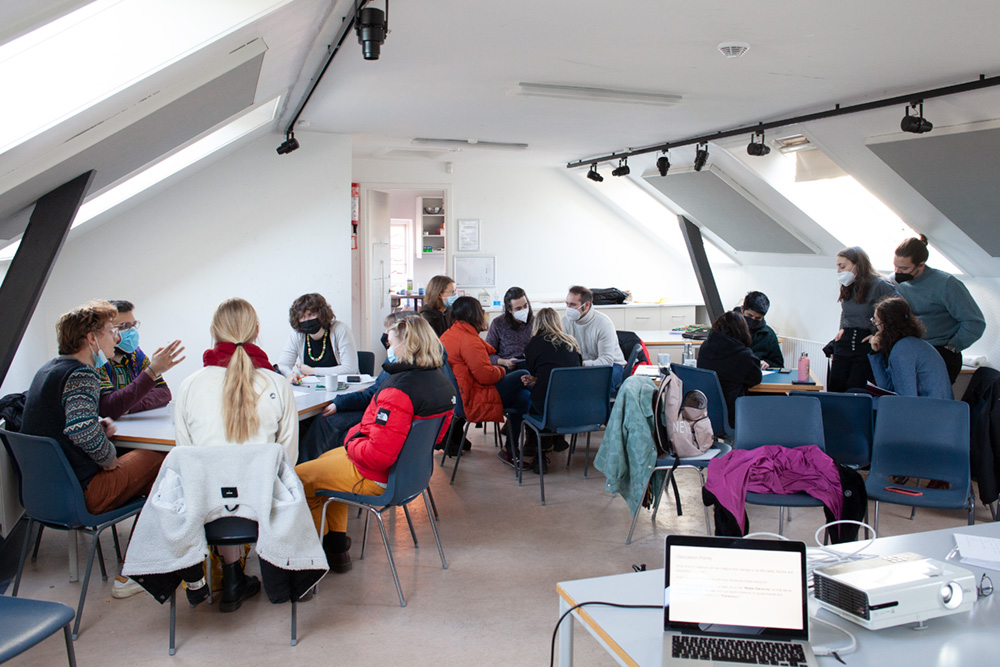C6: Creativity, Culture and Collaboration to Combat Climate Change
From March 2021 to March 2023, SixtyEight took part in the Erasmus+ project C6: Creativity, Culture and Collaboration to Combat Climate Change, which had the overall aim to engage with young people in the age group 18-29, in order to encourage them to undertake small changes in their everyday lives that can make a difference in comabting climate change, and furthermore to become ambassadors in their local communities. The participants were drawn from the 5 countries in which the project partners are based: Denmark, Sweden, Norway, the United Kingdom, and Italy.
SixtyEight's role in the project was to organise and conduct a training week in Copenhagen for the participants, hold two exhibitions related to the overall theme of the C6 project, and to contribute content together with the other project partners to the project's Intellectual Outputs, which took the form of a handbook and several different kinds of educational video.
C6 Training Week and Workshops, January 2022
SixtyEight created and hosted a 5-day training workshop for young people aged 18-29. The workshops treated five themes or areas of focus in terms of climate challenges and how we might begin to solve them: clothing, urban planning, food prodcution, water resource management, and technology. Talks and workshops were held by fashion designer, product manager and professor Sabrina Fischer-Attinger, SixtyEight's own staff Inanna Riccardi and Christopher Sand-Iversen, artist Åsa Sonjasdotter, members of the foodstuffs community Københavns Fødevarefællesskab, hydraulic engineer Jakob Luchner, artist Roberto Gezzi, and professor at the IT University of Copenhagen Steffen Dalsgaard.

For the artist Åsa Sonjasdotter's workshop about seeds, the participants were asked to bring local seed varieties with them from their home towns, variously in Norway, Sweden, Italy and the UK. During the workshop they wrote short texts and made drawings about the seeds, focusing on their origins, their typical usage and prevalence today, and what the plants meant to them. During the process, Åsa Sonjasdotter spoke about the importance of preserving and cultivating seed varieties, and how genertically modified crops are produced and some of the problems associated with them, including their lack of resistance to climatic changes. At the end of the workshop, each participant was asked to briefly present the seed variety they had brought with them and their reasons for doing so. Brown paper seed bags were then exchanged, so that the participants could take new seeds back home with them as part of the preservation process.
The results of the seed workshop formed part of the exhibition The Writing of Nature, which opened at SixtyEight on the final day of the training week. Here the seed bags were also available for visitors to the exhibition to take home with them.
View the exhibition The Writing of Nature
In January 2023, SixtyEight held the second and concluding exhibition, Nature-scape, at the University of Copenhagen's Department of Geosciences and Natural Resource Management.

Artist Roberto Ghezzi produced a new series of his Naturografia works over a period of one month in three locations in and around Copenhagen: Fælledparken, Stejlepladsen, and the suburb of Ballerup. The works consisted of canvases planted in the ground, during which time they interacted with the soil, air, and micro-organisms.
As part of the training week, the entire group walked to the location of the canvas installed in Fælledparken, where they watched Ghezzi remove it from the ground and listened to him explaining the interactions with soil and organisms that he was able read from nature's 'writing' on the material. In some of his projects, Ghezzi collaborates with scientists who bring their knowledge to bear on analysing the organisms present, as well gaining useful information about the health of the soil and water environments where Ghezzi carries out his work.
Three of the canvases produced in Copenhagen were exhibited in the The Writing of Nature. More information about the three locations and the soil types can be read here: Locations. Soil Texture.
Ghezzi's explanation about the canvas and the answers the participants gave to his question, 'How do you see the role of art in relation to nature and climate change?' form part of SixtyEight's contributuon to the C6 project's Intellectual Output 2.
Hydraulic engineer Jakob Luchner's talk on water resource management involved a presentation of the issues regarding water resources in the contemporary world and the near future as the climate warms up, and showed some examples of the principles and methods of Integrated Water Resources Management. This was followed by a role game using a fictional example of a water resource conflict, in which the workshop particiapnts were encouraged to adopt various positions and try to find a solution.
The presentation and role game serve as the basis for SixtyEight's contribution to the C6 project's Intellectual Output 3.
